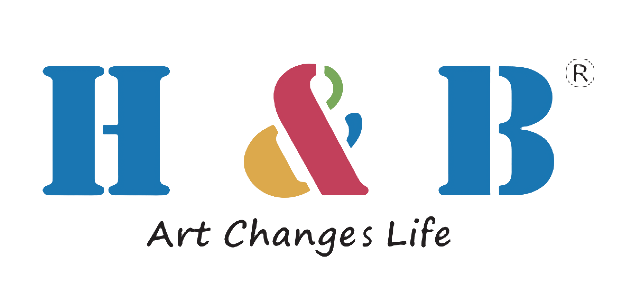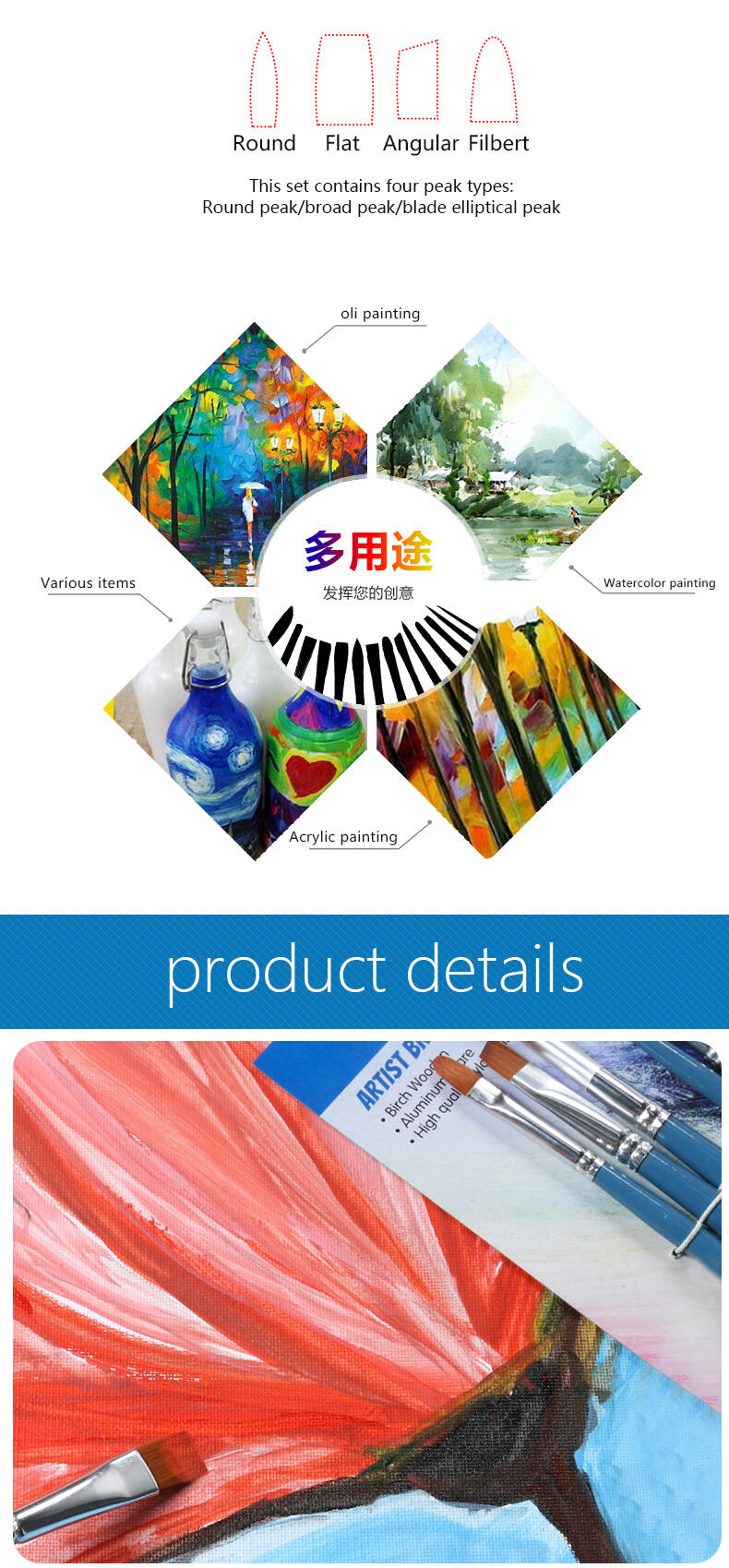Wieczyste uroki grafitu dla artystów koncepcyjnych
W szybko rozwijającym się świecie sztuki koncepcyjnej, gdzie pomysły muszą płynnie przechodzić z wyobraźni na papier, ołówki rysunkowe pozostają niekwestionowanymi liderami wyrazu twórczego. Proste, a zarazem wszechstronne narzędzia przetrwały próbę czasu i nadal są pierwszym wyborem artystów, którzy potrzebują szybko wizualizować i przekazywać swoje pomysły. Natychmiastowa reakcja i elastyczność ołówków rysunkowych czynią je nieocenionymi dla artystów koncepcyjnych pracujących pod presją czasu i wymagających szybkiego tworzenia wielu wariantów projektów.
Zawodowi artyści koncepcyjni z różnych branż, od gier po produkcję filmową, konsekwentnie sięgają po ołówki rysunkowe na wstępnym etapie swojego procesu twórczego. Naturalny związek między ręką a materiałem umożliwia spontaniczne wyrażanie idei, a przy tym łagodna natura grafitu pozwala na szybkie modyfikacje i dopracowania. Ta wrodzona elastyczność czyni ołówki rysunkowe szczególnie odpowiednimi do dynamicznego charakteru sztuki koncepcyjnej, w której pomysły rozwijają się i przekształcają w trakcie całego procesu tworzenia.
Istotne cechy zawodowe Ołówki do rysowania
Stopnie twardości grafitu i ich wpływ
Ołówki rysunkowe dostępne są w szerokim zakresie twardości, od najmiększych 9B do najtwardszych 9H, przy czym każda twardość spełnia konkretne zadanie w sztuce koncepcyjnej. Miększe stopnie, takie jak 6B i 8B, są idealne do tworzenia śmiałych, ekspresyjnych pociągnięć i głębokich cieni, podczas gdy twardsze, takie jak 2H i 4H, doskonale nadają się do precyzyjnych linii i subtelnych detali. Ta różnorodność pozwala artystom koncepcyjnym osiągać różne efekty i tekstury w jednym medium, co czyni ołówki niezwykle wszechstronnymi zarówno do szybkich szkiców, jak i szczegółowej dopracowywania.
Staranne dobieranie stopni twardości ołówków może znacząco wpłynąć na szybkość i jakość prac koncepcyjnych. Wielu artystów zaczyna od ołówka średniej twardości, takiego jak HB lub 2B, do wstępnego szkicowania, a następnie przechodzi na miększe lub twardsze stopnie w zależności od potrzebnych efektów. Takie systematyczne podejście umożliwia efektywny proces twórczy i spójne wyniki w różnych koncepcjach.
Czynniki jakości i wydajności
Ołówki rysunkowe profesjonalnej klasy oferują lepszą jakość rdzenia i drewna w porównaniu ze standardowymi ołówkami grafitowymi. Rdzeń grafitowy został specjalnie opracowany tak, aby zachować swoje właściwości podczas użytkowania, zmniejszając pęknięcia i zapewniając gładkie nanoszenie. Obudowy z wysokiej jakości drewna cedrowego nie tylko chronią rdzeń, ale również ostrzą się czysto, umożliwiając artystom utrzymanie precyzyjnych groty do szczegółowych prac.
Wydajność ołówków rysunkowych zależy również od procesu produkcji. Wysokiej klasy ołówki przechodzą rygorystyczną kontrolę jakości, aby zapewnić spójne oznaczenie stopnia twardości oraz dokładne centrowanie rdzenia. Te czynniki przyczyniają się do niezawodności i przewidywalności, których potrzebują artyści koncepcyjni podczas pracy nad projektami o ograniczonym czasie realizacji.
Szybkość i efektywność w tworzeniu koncepcji
Możliwość szybkiej iteracji
Ołówki rysunkowe doskonale nadają się do wspierania szybkiego procesu iteracji niezbędnego w sztuce koncepcyjnej. Artysta może szybko szkicować wiele wariantów jednego pomysłu, wprowadzając subtelne korekty i eksplorując różne kierunki, bez konieczności skomplikowanego przygotowania czy poruszania się po interfejsie cyfrowym. Natychmiastowa odpowiedź między ruchem ręki a pozostawionym śladem umożliwia błyskawiczne dopracowywanie koncepcji, co czyni ołówki nieocenionymi podczas sesji burzy mózgów i w wstępnych fazach projektowania.
Możliwość nakładania warstw i stopniowego rozwijania rysunków również wspiera iteracyjny charakter rozwoju koncepcji. Artysta może zacząć od lekkich, gestualnych zarysów, a następnie stopniowo dodawać szczegóły i dopracowanie, zachowując elastyczność na każdym etapie procesu twórczego. Takie podejście warstwowe jest szczególnie przydatne podczas pracy z klientami lub reżyserami artystycznymi, którzy mogą żądać zmian lub wariantów.
Integracja z przepływem pracy i uniwersalność
Ołówki rysunkowe bezproblemowo integrują się zarówno z tradycyjnymi, jak i cyfrowymi procesami pracy. Wstępną szkiców ołówkowych można łatwo zeskanować i dalej opracowywać w oprogramowaniu cyfrowym, tworząc solidne podstawy dla końcowego dzieła. Naturalna tekstura i charakter śladów ołówkowych często nadają jakości organicznej, której trudno osiągnąć wyłącznie drogą cyfrową, co czyni ołówki rysunkowe wartościowymi nawet w przeważnie cyfrowych procesach produkcyjnych.
Przenośny charakter ołówków rysunkowych przyczynia się również do ich efektywności w sztuce koncepcyjnej. Artysta może pracować wszędzie i w każdej chwili, nie polegając na źródłach zasilania ani na przygotowaniu technicznym. Ta mobilność sprzyja spontanicznemu generowaniu pomysłów i umożliwia produktywne wykorzystanie czasu w różnych środowiskach pracy.
Wyrażanie twórcze i kontrola techniczna
Wszechstronność kreślenia znaków
Ołówki rysunkowe zapewniają niezrównaną kontrolę nad grubością linii, wrażliwością na nacisk i charakterem oznaczenia. Artysta może tworzyć wszystko – od ledwo widocznych cienkich linii po śmiałe, ekspresyjne pociągnięcia – za pomocą jednego narzędzia, zmieniając jedynie uchwyt i nacisk. Ta wszechstronność jest szczególnie przydatna w sztuce koncepcyjnej, gdzie różne jakości linii mogą być potrzebne do oddania różnych materiałów, faktur czy warunków oświetlenia.
Naturalna odpowiedź ołówków rysunkowych umożliwia również intuicyjne wyrażanie formy i objętości. Artysta może łatwo regulować nacisk, by uzyskać subtelne stopniowanie i przejścia, niezbędne do oddania trójwymiarowej formy w szybkich szkicach. Bezpośrednia kontrola nad wartością i tonem pomaga skutecznie przekazywać pomysły projektowe.
Zarządzanie teksturą i szczegółami
Unikalne właściwości grafitu pozwalają artystom na tworzenie szerokiej gamy faktur i powierzchni. Poprzez zmianę techniki i nacisku artyści koncepcyjni mogą sugerować różne materiały i wykończenia w swoich szkicach. Możliwość stopniowego nakładania warstw umożliwia również tworzenie złożonych faktur i wzorów, których trudno byłoby osiągnąć innymi technikami.
Dodatkowo ołówki rysunkowe świetnie sprawdzają się zarówno w pracach gestualnych, dużych formach, jak i w precyzyjnych szczegółach, pozwalając artystom koncentrować się na różnych aspektach ich koncepcji w zależności od potrzeb. Ta elastyczność odpowiada różnorodnym wymaganiom sztuki koncepcyjnej – od szybkich szkiców miniatur po bardziej rozwinięte rysunki prezentacyjne.
Często zadawane pytania
Jaki gatunek ołówka rysunkowego jest najlepszy do sztuki koncepcyjnej?
Większość artystów koncepcyjnych woli zaczynać od ołówków średniej twardości, takich jak 2B lub HB, do szkiców wstępnym, ponieważ zapewniają one dobry balans między ciemnością a kontrolą. Zaleca się zestaw ołówków w zakresie od 4H do 6B dla kompletnego zestawu narzędzi artysty koncepcyjnego, umożliwiając zarówno precyzyjne linie, jak i śmiałe cieniowanie.
Czy ołówki rysunkowe można skutecznie łączyć z narzędziami cyfrowymi?
Tak, ołówki rysunkowe doskonale sprawdzają się jako część hybrydowego procesu pracy. Szkice ołówkowe mogą być zeskanowane i dalej rozwijane cyfrowo, łącząc organiczny charakter tradycyjnych mediów z elastycznością narzędzi cyfrowych. Wielu zawodowych artystów koncepcyjnych stosuje tę metodę, aby zmaksymalizować efektywność i potencjał twórczy.
Jak ołówki rysunkowe porównują się do tabletów cyfrowych w tworzeniu sztuki koncepcyjnej?
Chociaż tablety cyfrowe oferują wiele zalet, ołówki rysunkowe zapewniają natychmiastową informację dotykową i nie wymagają czasu przygotowania. Doskonale sprawdzają się w sytuacjach wymagających szybkiego opracowywania pomysłów oraz zapewniają bezpośredni związek między ręką a nośnikiem, który wielu artystów uważa za nieoceniony podczas tworzenia wstępnych koncepcji. Obie te narzędzia często uzupełniają się w profesjonalnej praktyce.


